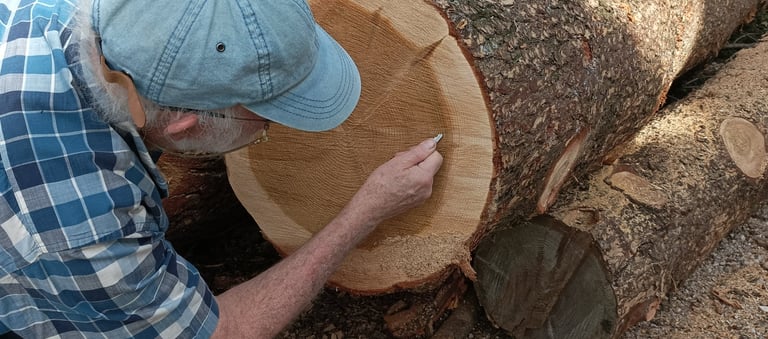
The felling of giants.
Some giant cedars bite the dust.
Joan
2/23/20244 min read
We didn't want to see them go...this row of fine cedar trees , pushing skywards above the tall buildings of the maison forestier. Trees may be ten a penny in this neck of the woods , but these trees seemed very special indeed.
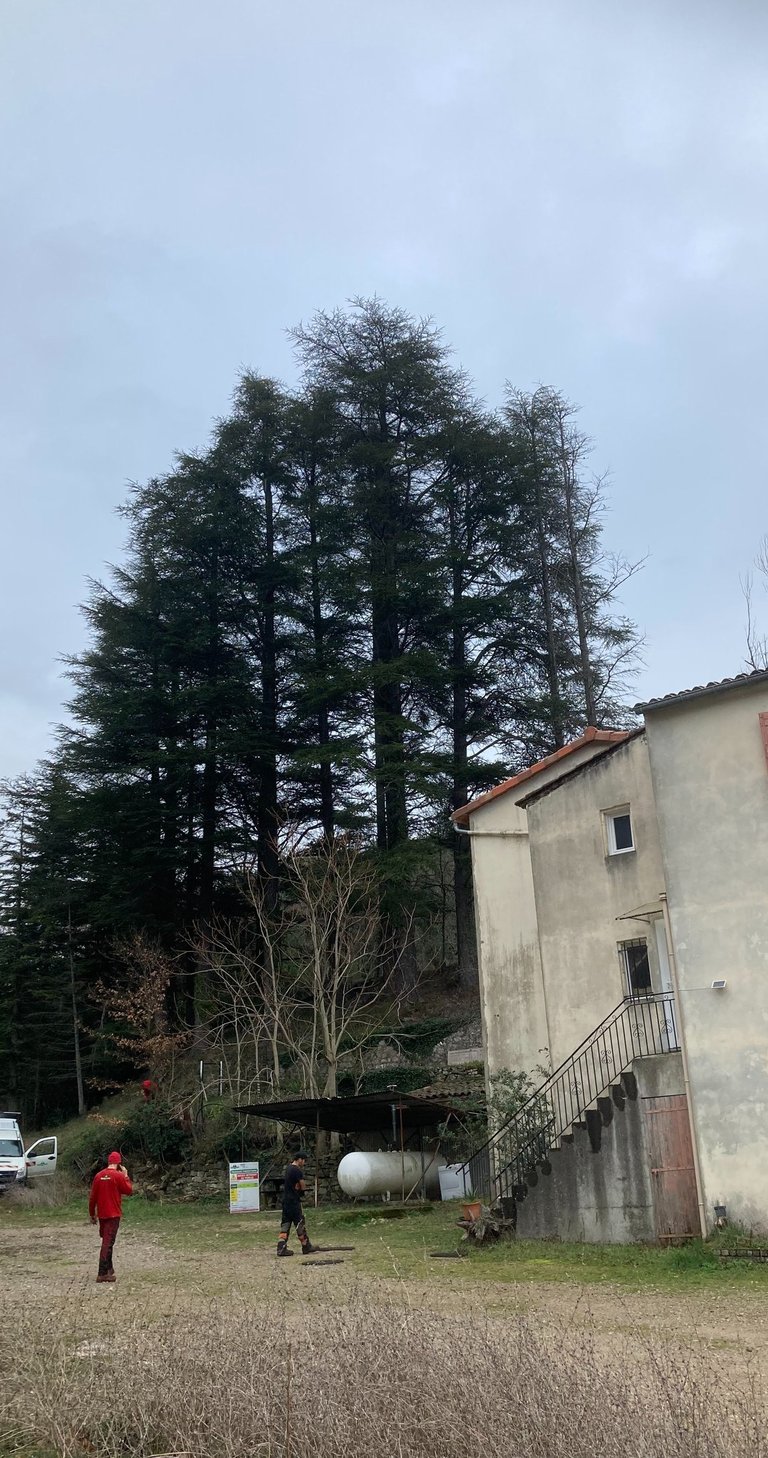

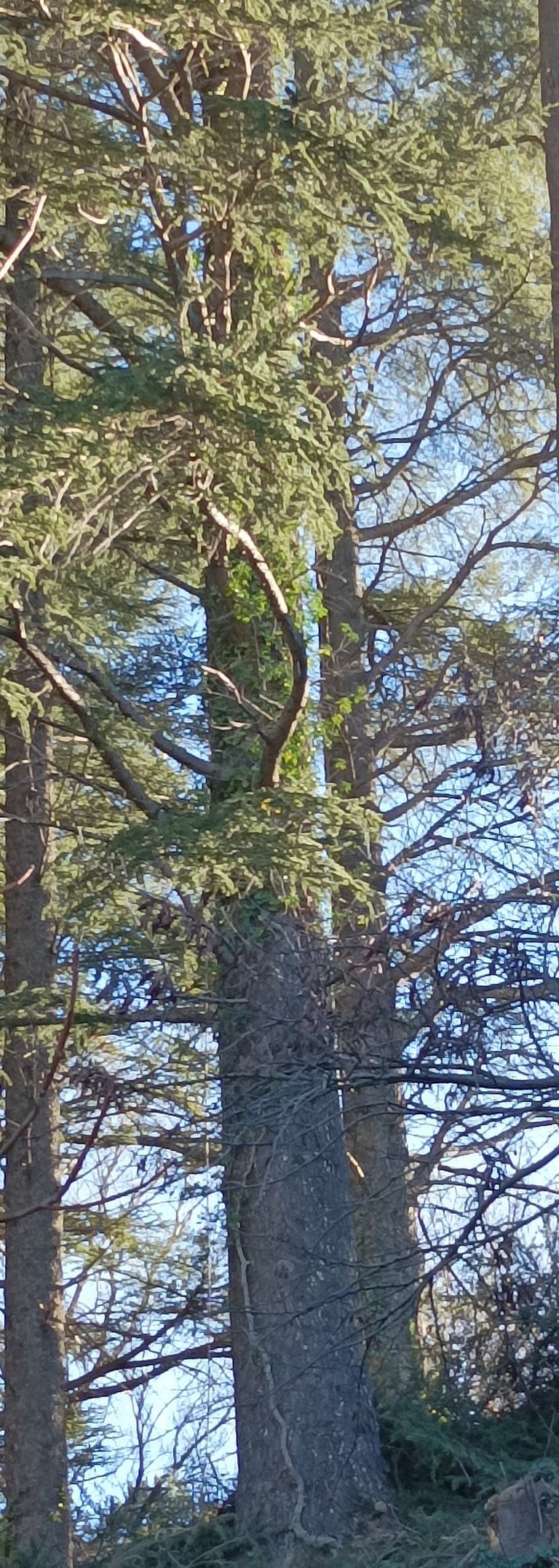

It all began when we received an email from our neighbour Marie-Eve , who is the new chef of the forest. She informed us that our forest road would be disrupted until the end of March as they were undertaking some forest clearance. But that was O.K. We are used to this. On occasions they have 'clear felled' a whole area for replanting new species, but this time they just planned to thin out part of the forest by taking out the largest pines. These pins d'Autriche(black Austrian pine,) first planted well over a century ago, grow like weeds. More will grow in their place.



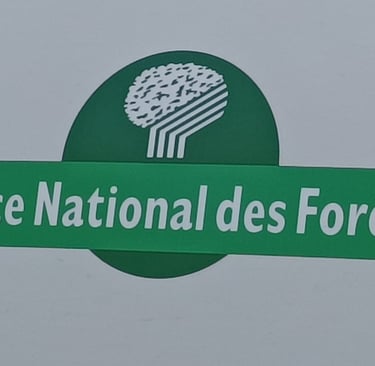
On one memorable occasion, some tree felling was carried out by a single man driving a huge tracked vehicle. In what seemed like seconds, a giant pine was felled , stripped of all its branches and placed as neatly as a wooden pencil on a pile of others. But this machine caused enormous destruction , and the land remained ravaged for a long time afterwards. Perhaps that is why we have not seen its like again.

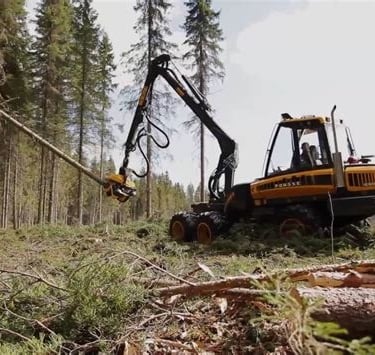
This time a team of four men turned up. One or two were equipped with chain saws to fell each chosen tree and then trim its branches, while the others worked with a machine to winch the felled and stripped trees up the steep slopes and lay them in neat piles along the sides of our road. Their shouts filled the forest as they relayed instructions to each other , and before long we saw many piles of logs arranged alongside our forest road.
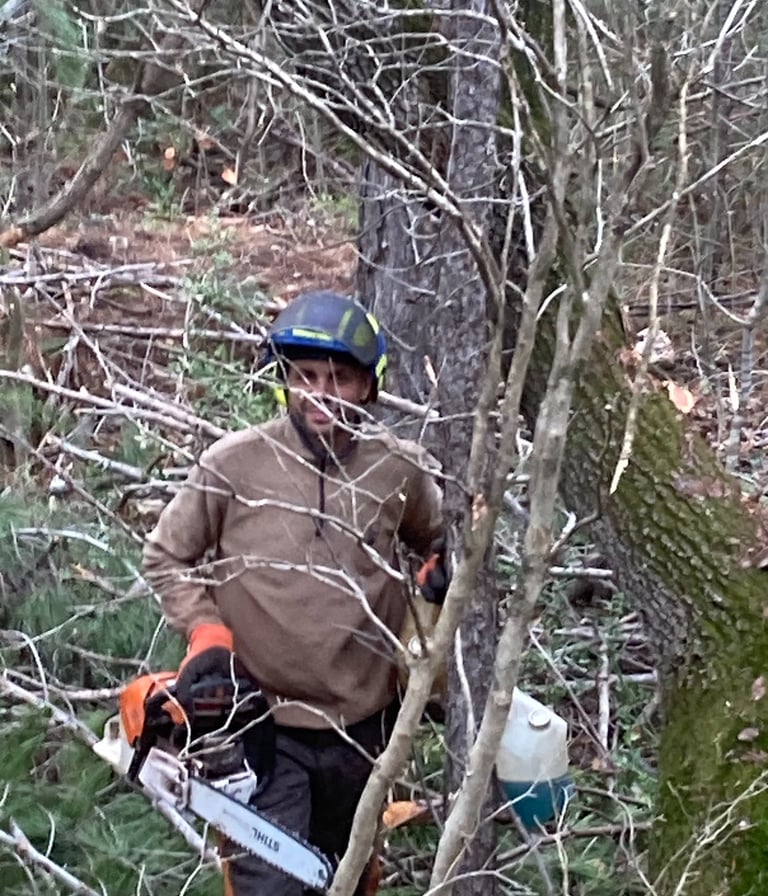

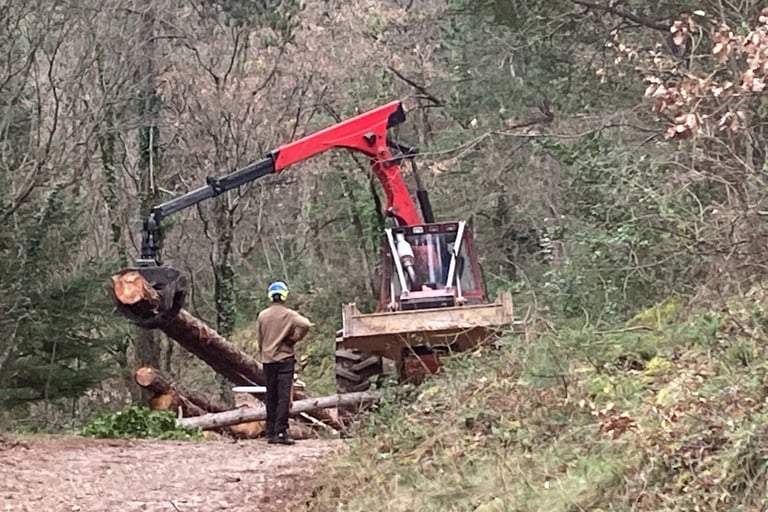

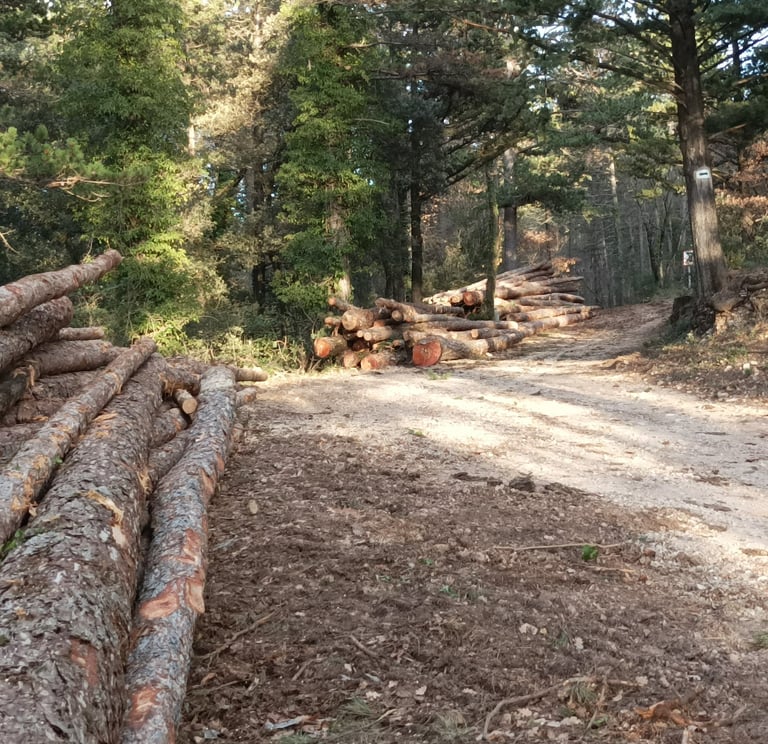

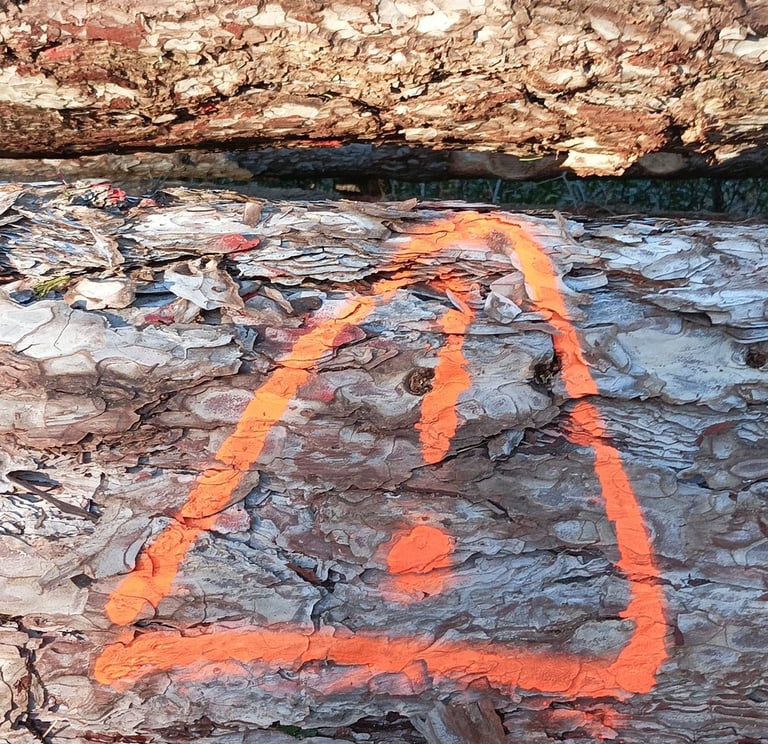

But then came a second text message. This one was to explain that the magnificent row of cedar trees that stands above the maison forestiere was also to be felled. Although this timber is much more valuable, and will be sold for flooring and other uses, rather than the paper pulp and fibreboard that the pines are destined for, this was not the purpose of the exercise. Apparently the cedars posed a danger and could not be saved.
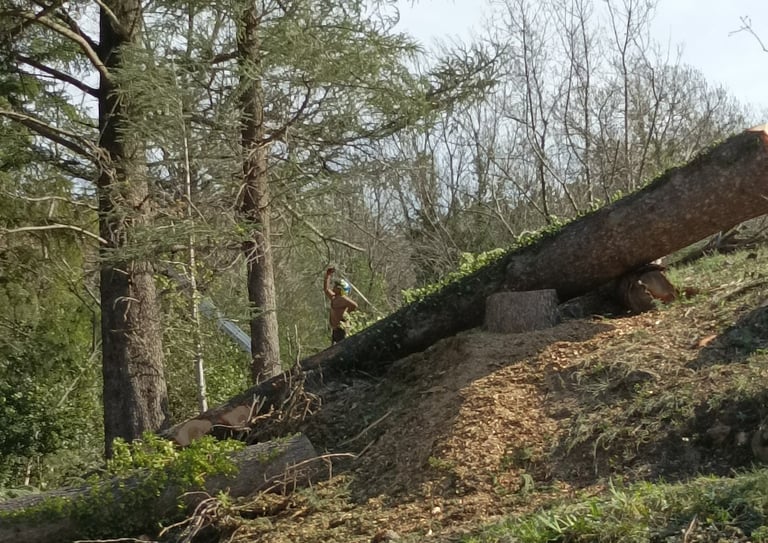

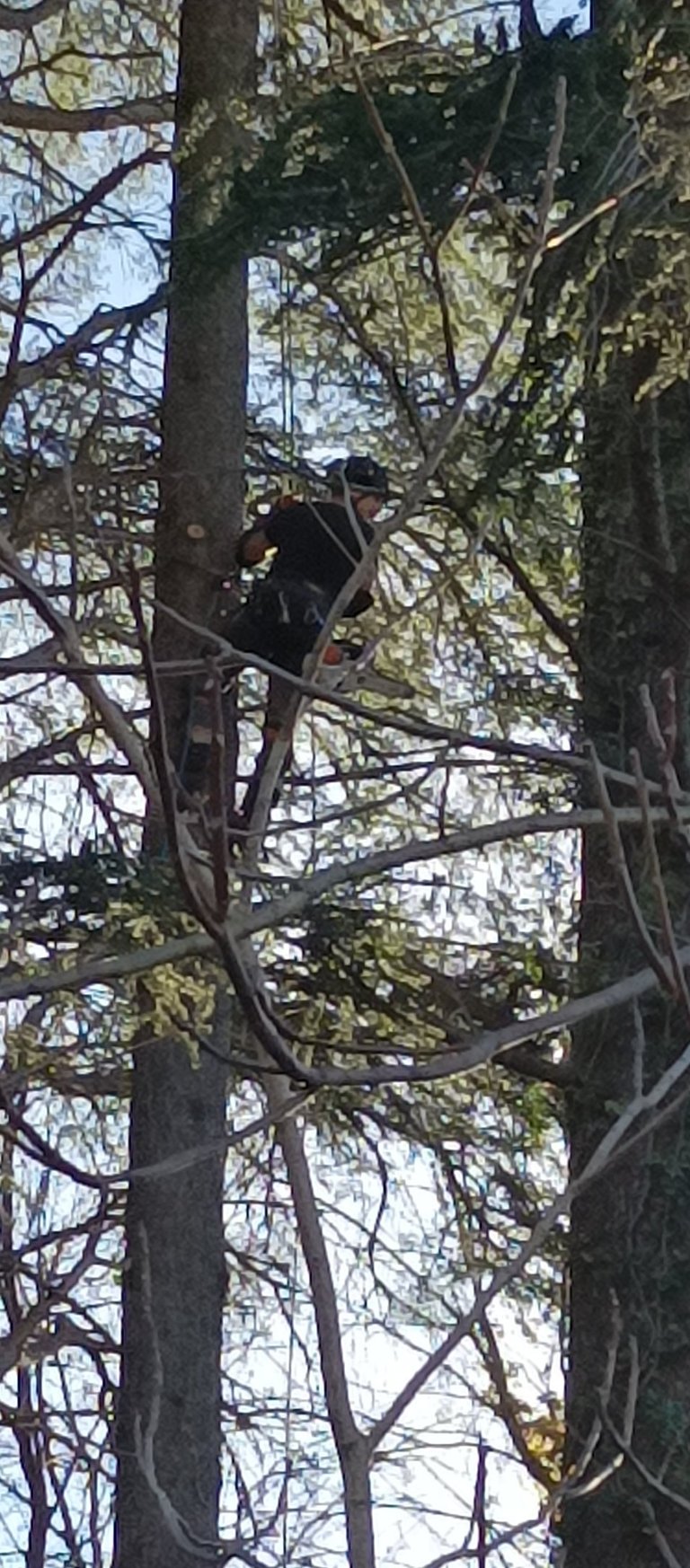

We watched as a worker took careful measurements of a tree with his special instrument to gauge its fall. One of his colleagues had the job of climbing up to remove branches before the major job of felling it began. In all, it was quite a task, but eventually , after a few days, all the trees had been felled and neatly stacked. What a sad sight.


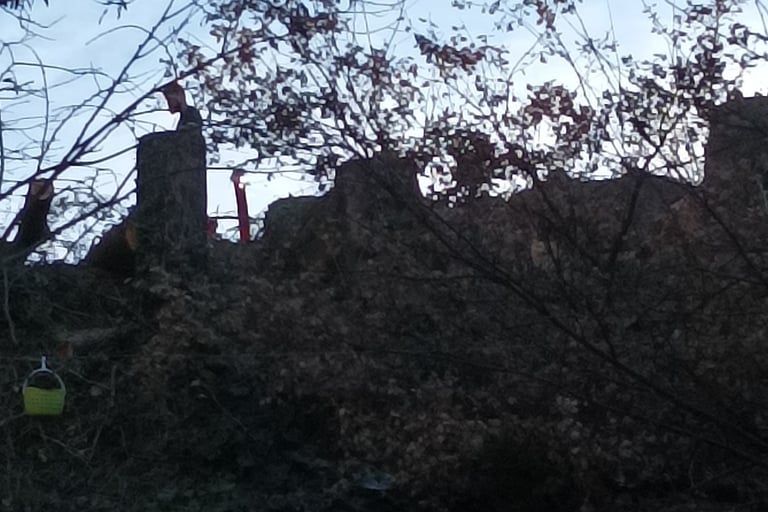

But then came a surprise. We were not the only ones to mourn these beautiful trees. We passed Mme Carabas, a fellow walker, who lives in the nearby hamlet of Aubaygues, whose elderly father, M. Carabas, we once knew. When we told her about the felling she announced, "My father helped to plant those trees more than eighty years ago. " She explained to us how he used to work for the forestry authorities at Larcho as a young lad. When he was only sixteen, it was his job to carry mail on his bicycle between our forest and the forestry headquarters at Ganges. This, believe it or not , is a distance of 44 km, and is just under an hour's drive from here. Sadly, M. Carabas died a few years ago . He was in his nineties, and always loved to chat.


As we surveyed the magnificent fallen trunks, B. took out his Opinel knife, and painstakingly began to count the rings on one of the largest. At first they were quite wide apart, but as he tracked outwards, they became packed ever more tightly together. Guess how many he counted. Sure enough...Eighty!! Sometimes oral history can be the most reliable of all.


